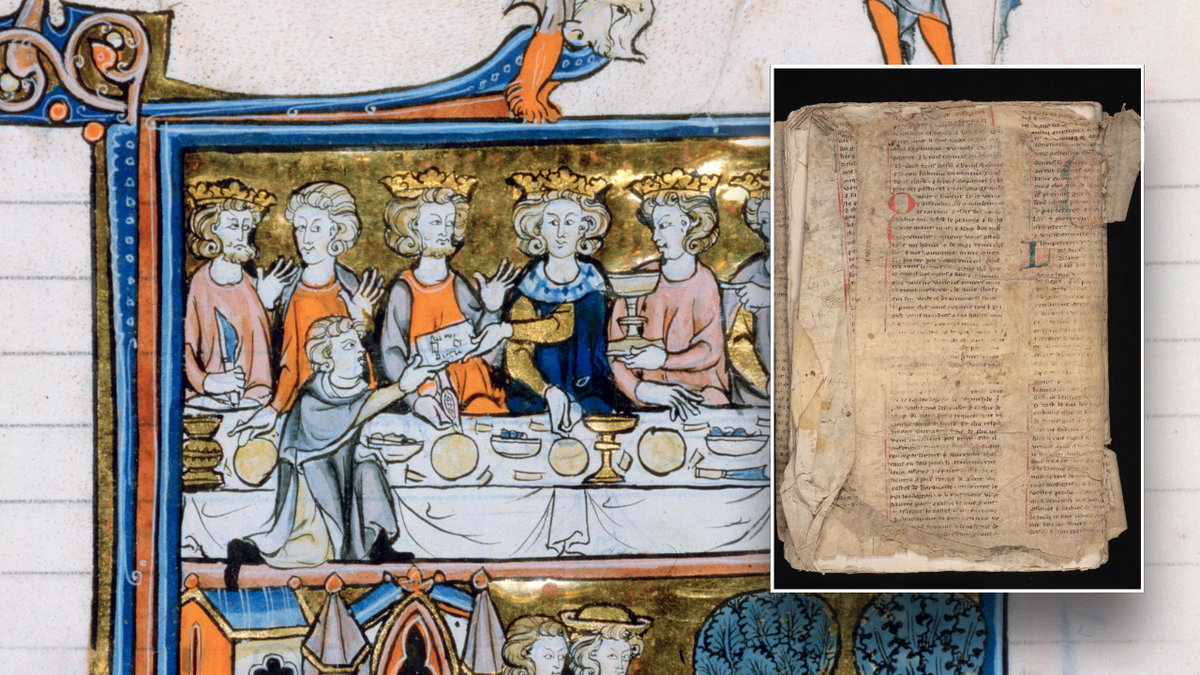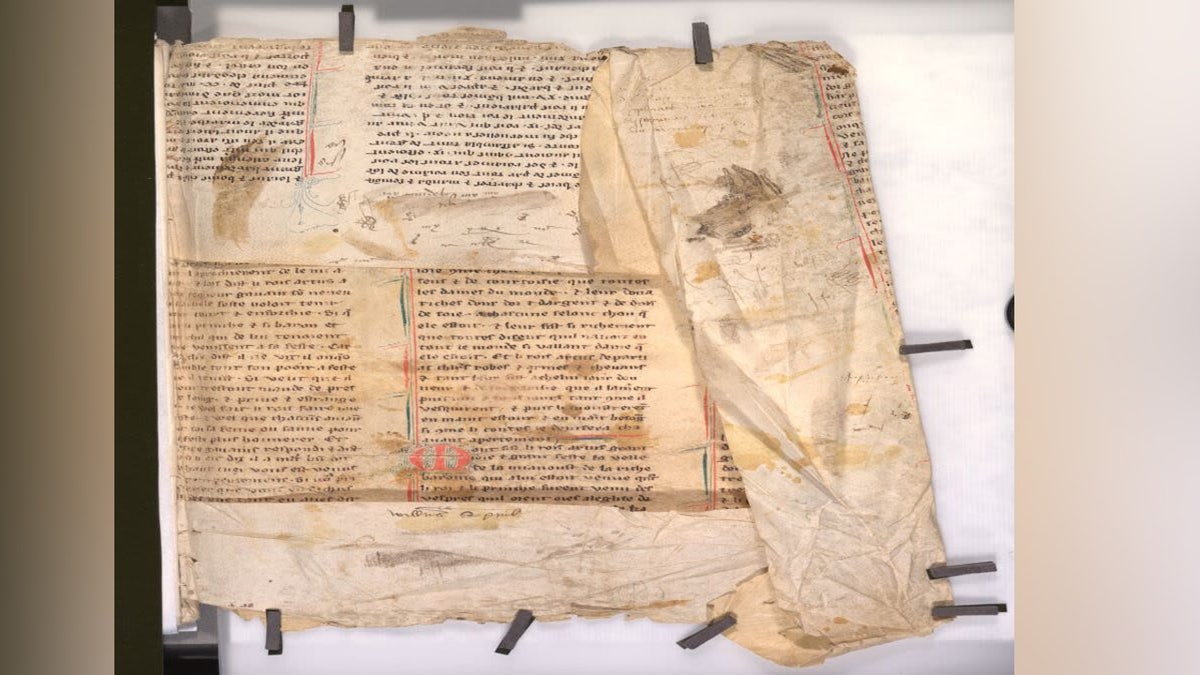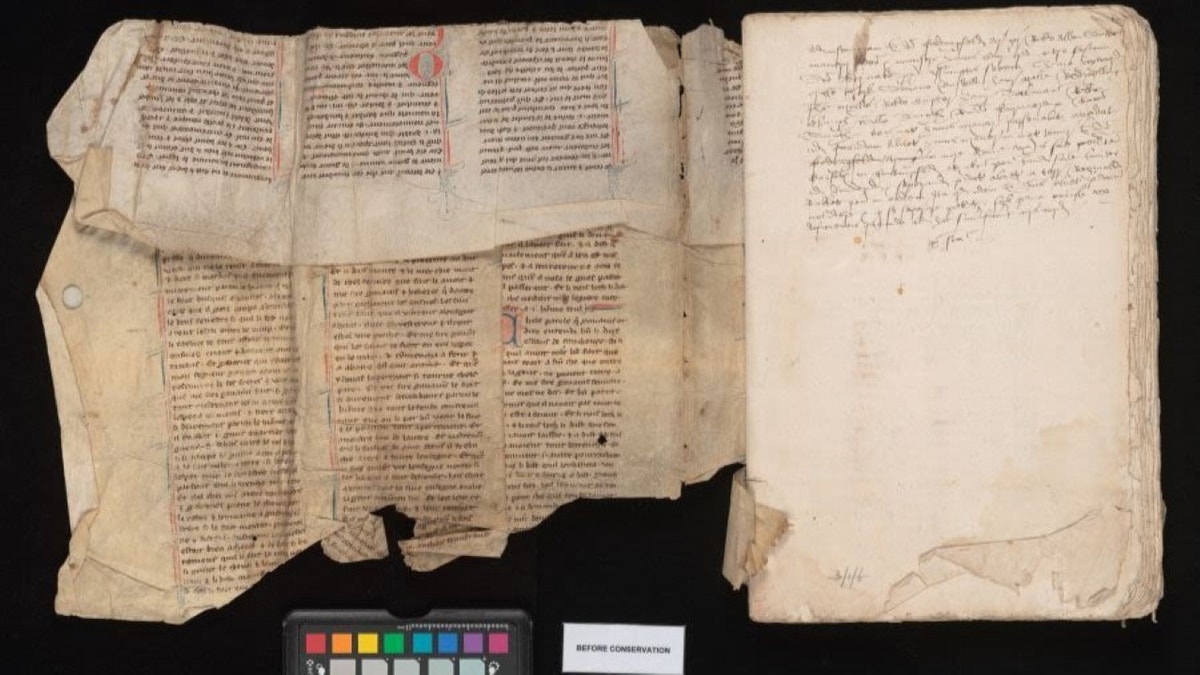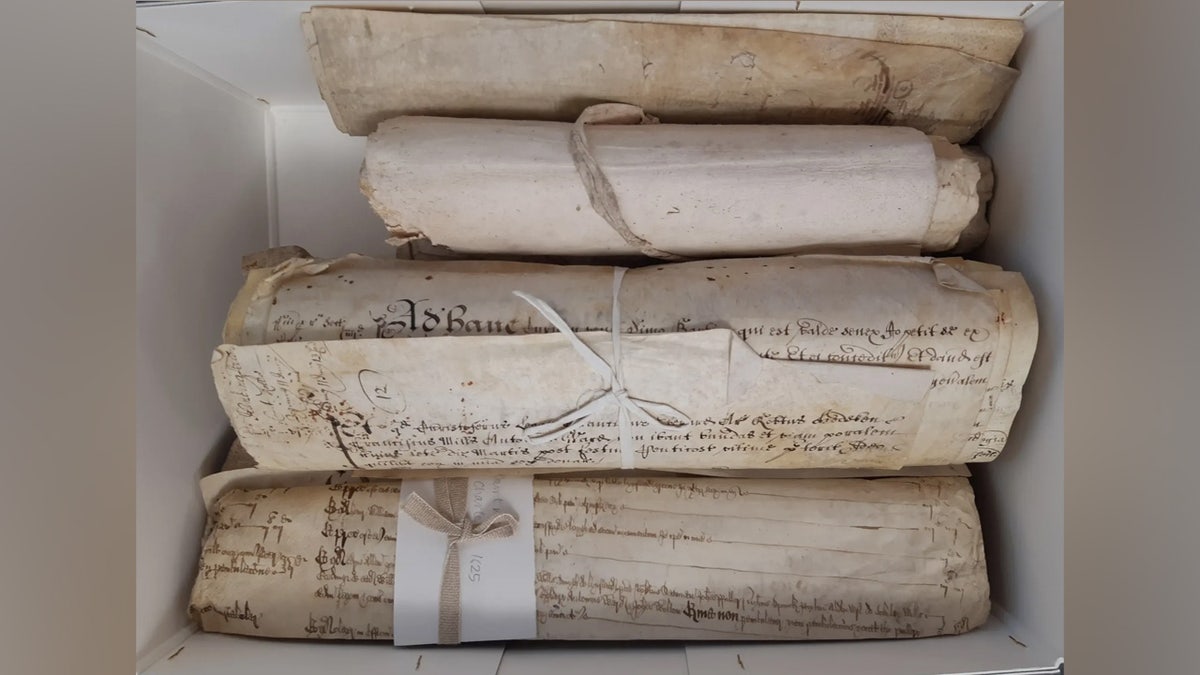ARTICLE AD BOX
Historians recently unveiled a rare 13th-century document depicting the tales of King Arthur and Merlin – and its survival is considered a miracle.
The discovery was announced by the University of Cambridge on March 25. The manuscript is part of the Suite Vulgate du Merlin, a French-language rendering of the story of King Arthur.
Arthur has been depicted as a legendary Briton king for several centuries, though his existence has been doubted by most historians.
ANCIENT TEN COMMANDMENTS FRAGMENT OF 2,000-YEAR-OLD MANUSCRIPT GOES ON DISPLAY AT REAGAN LIBRARY
In 2019, the fragile manuscript was discovered in an unlikely place in a Cambridge library – tucked in as the binding for an old book.
"The manuscript had survived the centuries after being recycled and repurposed in the 1500s as the cover for a property record from Huntingfield Manor in Suffolk, owned by the Vanneck family of Heveningham," the university's statement noted.

Cambridge University historians recently unveiled a rare literary depiction of King Arthur. (Cambridge University Library / CHIL)
"It meant the remarkable discovery was folded, torn and even stitched into the binding of the book - making it almost impossible for Cambridge experts to access it, read it or confirm its origins," the university said in a news release.
Thanks to modern technology – including multi-spectral imaging, computed tomography and 3D modeling – experts were able to scan and create a virtual image of the manuscript without risking any damage to it.
ANCIENT JEWISH RITUAL BATH, OLDEST OF ITS KIND IN EUROPE, UNCOVERED BY ARCHAEOLOGISTS
"Using mirrors, prisms, magnets and other tools, the team at CHIL [Cultural Heritage Imaging Laboratory] carefully photographed each section of the fragment," the university said.
"The hundreds of resulting images were then painstakingly reassembled digitally, much like a jigsaw, to create a coherent image of the text."
"By manipulating the digital images, the team could simulate what the document might look like if it were physically opened."

Each copy of the Suite Vulgate du Merlin was unique, having been written individually by scribes, the university said. (Cambridge University Library / CHIL)
Each copy of the Suite Vulgate du Merlin was unique, as they were individually handwritten by medieval scribes, and fewer than 40 copies are known to exist.
The Cambridge copy was written between 1275 and 1315.
"The text is written in Old French, the language of the court and aristocracy in medieval England following the Norman Conquest," the news release said.
"This particular fragment belongs to the genre of Arthurian romances [that] were intended for a noble audience, including women."
For more Lifestyle articles, visit foxnews.com/lifestyle
The university added that the manuscript "tells two key episodes from the end of the Suite Vulgate du Merlin."
"The first part recounts the victory of the Christians against the Saxons at the Battle of Cambénic," the statement reads. "It tells of the fight of Gauvain (with his sword Excalibur, his horse Gringalet and his supernatural powers), his brothers, and his father King Loth, against the Saxon Kings Dodalis, Moydas, Oriancés and Brandalus."
CLICK HERE TO SIGN UP FOR OUR LIFESTYLE NEWSLETTER
It went on, "The second passage presents a more courtly scene, set on the Feast of the Assumption of the Virgin Mary, with Merlin appearing at Arthur's court disguised as a harpist – a moment that highlights his magical abilities and his importance as an advisor to the king."

Experts used modern technology to "virtually unwrap" the manuscript without damaging it. (Cambridge University Library / CHIL)
The University of Cambridge even included a translated passage from the book – which painted a vivid scene of life in medieval England.
"While they were rejoicing in the feast, and Kay the seneschal brought the first dish to King Arthur and Queen Guinevere, there arrived the most handsome man ever seen in Christian lands," the passage read. "He was wearing a silk tunic girded by a silk harness woven with gold and precious stones which glittered with such brightness that it illuminated the whole room."
CLICK HERE TO GET THE FOX NEWS APP
The fragile document even contains small errors – such as calling the Saxon king Dodalis "Dorilas" – but those errors will only help specialists trace the manuscript's lineage.
"As every manuscript of the period was copied by hand, it means each one is distinctive and reflects the variations introduced by medieval scribes," the British university said.

The recently unveiled document paints a vivid picture of life in medieval England. (Cambridge University Library / CHIL)
"The way the manuscript has been carefully executed, with decorated initials in red and blue, gave further clues to its origins and helped indicate that it was produced between the end of the 13th and the beginning of the 14th century."

 1 day ago
19
1 day ago
19








 English (US) ·
English (US) ·